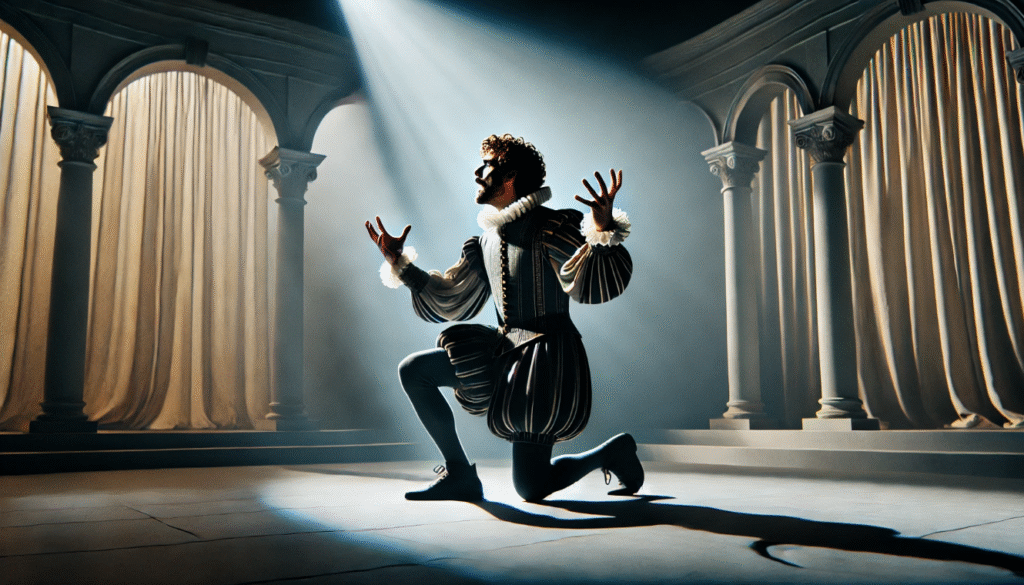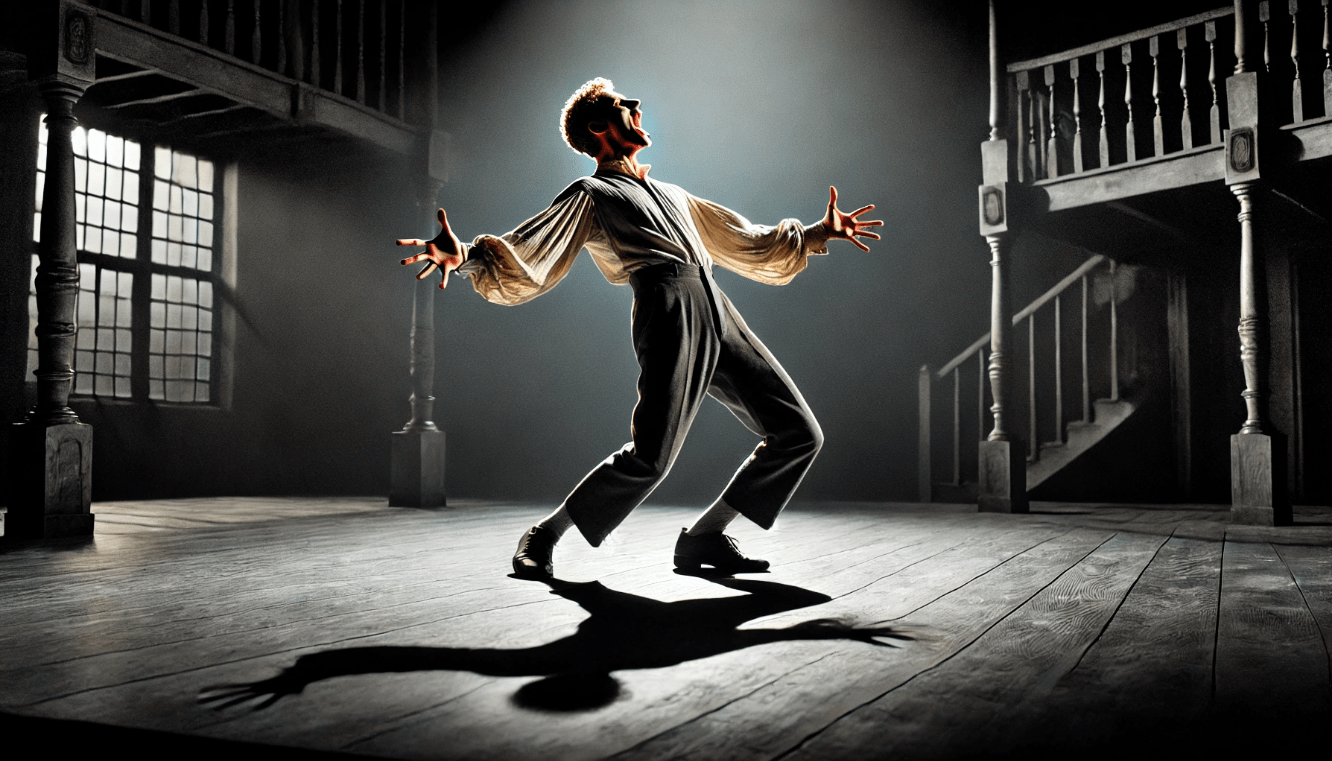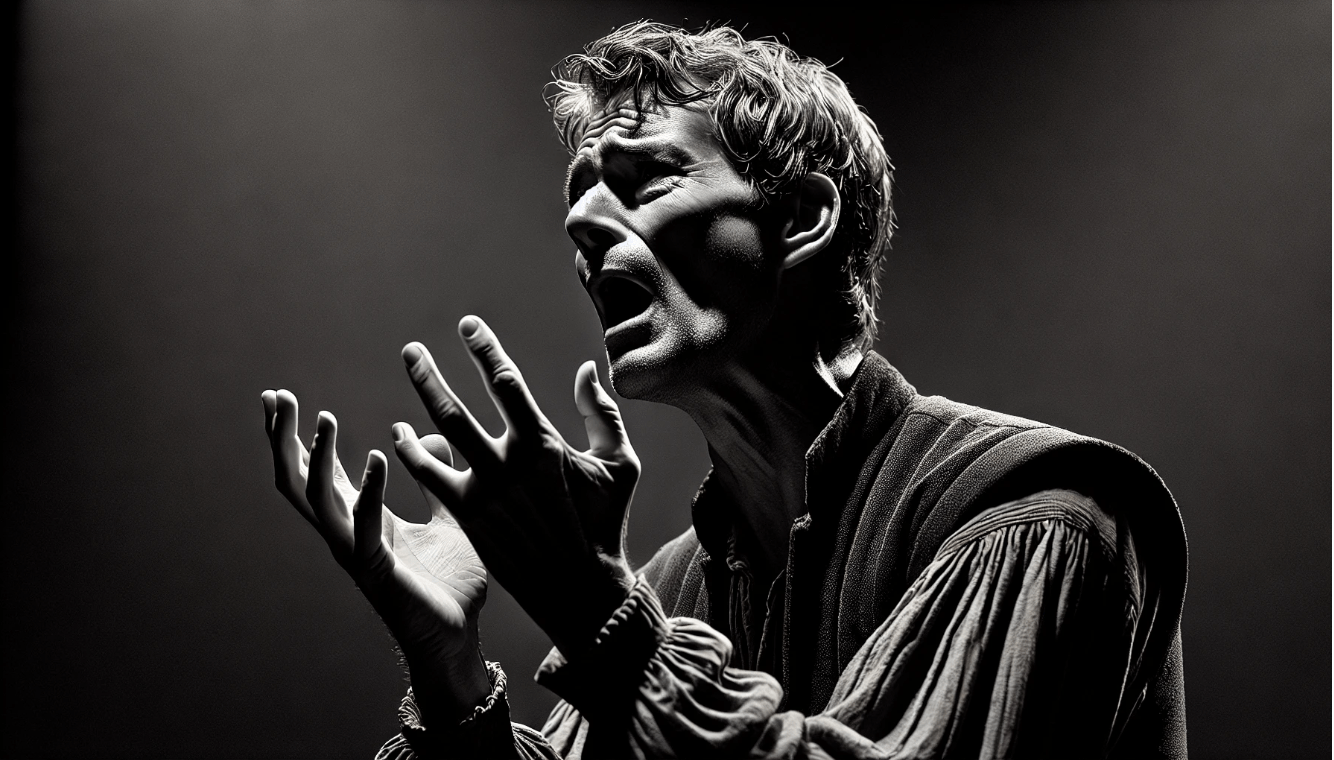
Shakespeare’s Influence on Acting Techniques: How His Legacy Shaped Modern Performance Styles
Imagine stepping onto a stage, knowing that the very foundation of your craft was shaped over 400 years ago. 🌟 For actors, Shakespeare’s influence on acting techniques is undeniable and continues to impact performances today. Whether you’re rehearsing for a classic play or a contemporary film, the principles Shakespeare introduced in his works are timeless, influencing how actors develop characters, use language, and engage an audience.
But why does his influence matter in today’s acting world? 🤔 The truth is, Shakespeare’s techniques go beyond the page. They offer tools that help modern performers connect with their roles in deeper, more authentic ways. In this article, we’ll explore how Shakespeare’s legacy still shapes acting techniques, and why understanding his methods can give you the edge in your craft—no matter what performance style you pursue. Keep reading to discover how his techniques are as relevant today as ever!
Table of Contents
Toggle1. The Foundation of Shakespearean Acting Techniques
When it comes to acting, Shakespeare’s influence is foundational. His works offer more than just complex characters and timeless plots—they also provide actors with the building blocks of effective performance. Whether you’re a seasoned professional or just starting out, understanding the core principles of Shakespearean acting can significantly enhance your skills. Let’s break down the essential elements.
1.1 Vocal Mastery: The Power of Language 🎭
One of the most significant aspects of Shakespeare’s influence is the mastery of voice. Shakespeare wrote his plays in iambic pentameter, a rhythmic pattern that mirrors natural speech but with a poetic flow. This not only requires actors to control their vocal delivery but also helps convey emotional depth and urgency.

1.2 Emotional Range and Expression 💔
Shakespeare’s characters are known for their emotional complexity. From the anguished Hamlet to the ambitious Lady Macbeth, Shakespeare’s writing challenges actors to dive deep into the psychological makeup of their roles. His plays often explore a vast range of emotions—love, jealousy, revenge, and despair—requiring actors to portray these feelings with intensity and authenticity.
1.3 Physicality: Bringing the Words to Life 💪
Shakespearean acting isn’t just about what you say; it’s about how you say it. His characters often engage in grand gestures, expressive body language, and dynamic movement. This physicality isn’t just decorative—it adds to the emotional depth of the performance and helps convey the internal struggles of characters.
1.4 Using the Stage: Presence and Focus 🎯
Shakespeare’s plays were written for large stages with minimal sets. This meant that actors had to use their space effectively, drawing attention through their physical presence and energy. An actor’s ability to hold the audience’s gaze and command the space was crucial to making their performance stand out.
2. The Impact of Shakespeare on Character Development
Shakespeare didn’t just create memorable stories—he also revolutionized how characters are developed and portrayed on stage. His characters are complex, multi-dimensional, and deeply human, which is why they continue to captivate audiences centuries later. For actors today, understanding how to develop characters the “Shakespearean way” can take your performances to the next level.
2.1 Creating Multi-Dimensional Characters 🌱

One of Shakespeare’s biggest contributions to acting was his ability to create characters that feel like real people—full of contradictions, struggles, and deep emotional layers. Whether it’s the tortured Hamlet, the ambitious Macbeth, or the vulnerable Juliet, Shakespeare’s characters are never one-dimensional.
2.2 The Power of Conflict: Internal vs. External Struggles ⚔️
Shakespeare’s characters are often defined by their inner struggles, which directly influence their actions. The tension between a character’s internal desires and the external forces at play (society, family, love, duty) creates drama. Think of Hamlet’s famous soliloquy, where he grapples with his own morality and the act of revenge.
2.3 Relationships: Building Connections on Stage 💑
Shakespeare understood the importance of relationships in shaping character. From the deep love between Romeo and Juliet to the power struggle between Macbeth and Lady Macbeth, relationships are key to understanding how characters evolve. These dynamics often reveal truths about the character that wouldn’t otherwise surface.
2.4 Flaws and Growth: The Journey of Transformation 🌟
Another hallmark of Shakespeare’s characters is that they are not static—they evolve over time. Many of Shakespeare’s most iconic characters experience a transformative journey, whether it’s Macbeth’s descent into madness or King Lear’s realization of his mistakes. This growth (or decline) is crucial to the development of a character.
3. Shakespeare’s Verse and Its Modern Relevance to Acting
Shakespeare’s use of verse is one of the most distinctive features of his plays, and it holds significant relevance for modern actors. The structure of his language isn’t just poetic—it’s a tool that can deepen an actor’s performance, sharpen their vocal skills, and create a stronger connection with the audience. Let’s explore why Shakespeare’s verse remains an invaluable resource for actors today.
3.1 Understanding the Rhythm: The Power of Iambic Pentameter 🎶
Shakespeare often wrote in iambic pentameter, a rhythm that mirrors the natural flow of human speech but with a distinct pattern: five pairs of unstressed and stressed syllables. This structure helps actors with timing, breath control, and emotional pacing. By mastering iambic pentameter, actors can bring a natural yet elevated quality to their delivery.
3.2 Amplifying Emotion Through Verse 💓
Shakespeare’s verse isn’t just for sound—it’s a powerful emotional tool. The way words are structured within the verse can amplify the emotional impact of a scene. Take, for example, Hamlet’s “To be, or not to be” soliloquy—every pause, every line change, and every emphasis increases the emotional depth. This gives actors the chance to layer emotions like despair, joy, or fear within a seemingly simple line of text.
3.3 Shaping Character Through Language 🗣️
The way Shakespeare writes his characters is often shaped by their verse. The rhythm and meter can reveal much about a character’s emotional state, social class, or psychological complexity. A noble character might speak in elevated verse, while a more tragic or confused character may struggle with fragmented speech. By paying attention to the verse, actors can uncover subtle details about their characters that deepen their portrayal.
3.4 Breaking Down the Text: Finding Meaning in Every Word 📖
Shakespeare’s verse is densely packed with meaning, and each word is carefully chosen to carry weight. Modern actors can sometimes rush through the language, missing subtle nuances. Understanding Shakespeare’s word choices and how they contribute to the overall theme or character arc is vital to delivering a powerful performance.
4. The Influence of Shakespeare on Modern Stage Presence and Movement
Shakespeare’s influence on stage presence and movement continues to shape how actors perform today. In his plays, the physicality of characters plays a crucial role in conveying emotions and intentions. From the grandeur of royal speeches to the tension of intimate moments, Shakespeare’s characters use movement and presence to communicate just as much as their words. Let’s dive into how these principles can enhance modern acting performances.
4.1 Physicality: Using the Whole Body to Tell the Story 🤸♂️

In Shakespeare’s time, actors had to rely heavily on their physical presence to communicate with the audience, especially in large open-air theaters. Movement wasn’t just decorative—it was essential to conveying meaning. Today, while we often perform in more intimate settings, the principle remains the same: an actor’s body is a powerful storytelling tool. Every gesture, posture, and movement can reveal a character’s emotional state or intentions.
4.2 Gesture and Expression: The Language of the Body ✋
Shakespearean actors mastered the art of using large, expressive gestures to emphasize key moments. These exaggerated gestures were a way to connect with audiences at a distance. In modern performances, this same principle applies, though we now use gestures in a more subtle way to convey deeper emotions and thoughts..
4.3 Stage Presence: Commanding Attention 🎯
In Shakespeare’s plays, actors needed to command the stage, whether through speech or presence. A strong stage presence isn’t just about being seen—it’s about owning the space, making every movement intentional, and drawing the audience’s focus. A character who dominates a scene often has an air of confidence that can be seen in how they carry themselves physically.
4.4 Using Space: The Art of Blocking and Movement 📏
Shakespearean actors were skilled at using space to amplify a scene’s emotional impact. The blocking—where actors position themselves on stage—was an essential part of their performance. Actors would often move in ways that physically represented the inner conflict or relationship dynamics of the characters.
5. From Shakespeare to Stanislavski: How Shakespeare Influenced Modern Acting Systems
Shakespeare’s influence on acting extends far beyond his own plays. His exploration of complex characters, emotional depth, and psychological conflict laid the groundwork for modern acting systems. One of the most notable examples is Konstantin Stanislavski’s acting method, which still shapes contemporary acting techniques today. Let’s explore how Shakespeare’s legacy influenced the development of these modern approaches.
5.1 Shakespeare and the Birth of Emotional Realism 🎭

One of the key elements of modern acting, particularly in Stanislavski’s system, is emotional realism. Stanislavski believed that actors should draw on their own emotions and experiences to create a truthful performance. While this system emerged in the 20th century, its roots can be traced directly to Shakespeare. His characters, such as Hamlet, Macbeth, and Othello, struggle with intense emotional conflicts, allowing actors to explore deep psychological states and motivations.
5.2 Psychological Depth: Shakespeare’s Complex Characters 🧠
Shakespeare’s ability to create multi-layered, psychologically complex characters was groundbreaking. Characters like Macbeth and King Lear are driven by inner conflicts and personal demons, challenging actors to explore their psyche deeply. This aligns closely with Stanislavski’s method, which encourages actors to understand and embody their character’s inner life, thoughts, and desires.
5.3 The Concept of ‘The Magic If’ 🔮
Stanislavski developed the idea of the “magic if”—a tool for actors to ask, “What would I do if I were in my character’s situation?” This idea has its roots in Shakespeare’s work, where characters often find themselves in extraordinary circumstances, such as Hamlet’s dilemma of avenging his father’s death or Lear’s tragic decision to divide his kingdom. These scenarios force characters to confront complex questions of morality and identity, helping actors explore hypothetical emotions and actions.
5.4 Building on Shakespeare: Modern Acting Techniques and Emotional Truth 📚
Stanislavski’s method of truthful acting—emphasizing emotional honesty and psychological exploration—has influenced many modern acting systems, including method acting, Meisner, and even modern film techniques. The focus on emotional truth, which Shakespeare’s works naturally explore, enables actors to deliver more nuanced performances that resonate deeply with audiences.
6. Shakespeare’s Influence on Contemporary Acting Techniques
Shakespeare’s impact isn’t just limited to traditional theater. His influence extends deeply into contemporary acting techniques, providing modern actors with tools to enhance performances across a wide range of genres—from drama to film to television. Let’s explore how today’s actors still draw on Shakespearean principles to create compelling, dynamic performances.
6.1 Shakespeare’s Emotional Range in Modern Film 🎬
Shakespeare’s works explore a vast array of emotions—love, betrayal, jealousy, madness, and redemption—all of which remain relevant in modern storytelling. Filmmakers and actors still turn to his characters for guidance when creating deeply emotional roles. Modern actors, from Laurence Olivier to Benedict Cumberbatch, have acknowledged how Shakespeare’s understanding of human nature enhances their performances, allowing them to tap into raw emotional truths.
6.2 Shakespeare’s Use of Verse in Contemporary Theater 🎭
While modern plays often use more casual, everyday language, the influence of Shakespeare’s verse can still be felt today, especially in classical and contemporary reinterpretations of his works. The heightened language of verse creates a rhythm that allows actors to express emotions in an elevated way. Even modern playwrights often use poetic language to give their characters more depth, echoing Shakespeare’s influence.
6.3 Shakespeare’s Character Complexity in Modern Roles 👥
One of Shakespeare’s most enduring legacies is his ability to create multi-faceted characters. Modern actors draw from this depth to portray complex, flawed, and relatable characters on screen and stage. Characters like Hamlet, Lady Macbeth, and Othello inspire actors to explore their own characters’ internal conflicts and motivations, making them feel real, vulnerable, and human.
6.4 Physicality and Stage Presence in Modern Acting 💪

Shakespearean actors used their entire body to communicate, whether through grand gestures, posture, or facial expressions. This emphasis on physicality continues to influence how modern actors approach stage presence. Whether on the big screen or the theater stage, today’s actors still rely on physical movement and body language to convey emotion and establish character. The principles of Shakespearean acting can help develop an actor’s ability to command attention with their physical presence.
7. The Practical Value of Studying Shakespeare for Today’s Actors
Shakespeare’s plays are often seen as the foundation of modern theater, but their value doesn’t stop there. Studying Shakespeare offers practical benefits for today’s actors, whether you’re performing in a classic play or a contemporary film. The lessons and techniques you can gain from his works can help you build a more versatile, confident, and emotionally engaging performance. Let’s explore why diving into Shakespeare is still incredibly valuable for actors today. 🎭
7.1 Mastering the Basics of Acting 📚
Shakespeare’s works challenge actors to master fundamental acting techniques, such as vocal control, emotional depth, and physicality. His plays require a high level of skill, from delivering complex monologues to using precise body movements. By working on Shakespearean texts, you build a strong foundation that you can apply to all types of acting, whether on stage or screen.
7.2 Developing Emotional Range and Depth 💔
Shakespeare’s characters are full of intense emotions—love, jealousy, ambition, rage, and grief. Mastering these emotions will allow you to develop a broader emotional range that can be applied to any modern role. Shakespeare’s characters often experience inner turmoil and struggle, teaching actors to dive deep into psychological complexity, which can be a game-changer for portraying authentic, emotionally resonant characters..
7.3 Enhancing Stage Presence and Confidence 💪
Shakespearean acting requires actors to command the stage with energy and focus. By studying his works, you can improve your stage presence and feel more confident in front of an audience. The grand gestures and deliberate movements required in Shakespearean theater translate well into any performance, helping you stay grounded and authoritative, whether you’re on a large stage or in a more intimate setting.
7.4 Strengthening Versatility as an Actor 🎬
While Shakespeare is often associated with classic theater, the skills you develop from his works are transferable to contemporary roles as well. His emotional depth, complex characters, and rich language are still present in modern plays, movies, and TV shows. By understanding Shakespeare, you can adapt his techniques to various performance styles and genres, enhancing your versatility as an actor.
Shakespeare’s influence on acting techniques is undeniable and timeless. His innovative approach to character development, emotional depth, and physical presence laid the groundwork for many of the modern acting methods we use today. By studying his works, contemporary actors gain invaluable tools—whether it’s mastering complex verse, tapping into emotional authenticity, or commanding the stage with presence.
Whether you’re preparing for a classic Shakespearean role or exploring modern performance styles, his techniques will help you connect more deeply with your character, engage your audience, and bring your performance to life in ways that resonate.
Embracing Shakespeare’s legacy isn’t just about studying his plays; it’s about integrating his principles into your own craft. So, dive into his works, experiment with his techniques, and discover how his enduring influence can elevate your acting career to new heights. 🎭
Frequently Asked Questions (FAQs)
1. How did Shakespeare influence modern acting techniques?
Shakespeare revolutionized acting by creating complex characters with deep emotional conflicts. His use of verse, strong physicality, and intricate relationships between characters laid the foundation for modern acting techniques, focusing on emotional depth, vocal mastery, and physical presence. Actors today still use these elements to create dynamic and authentic performances.
2. Why is Shakespeare’s verse important for modern actors?
Shakespeare’s verse, particularly his use of iambic pentameter, helps actors master vocal control, pacing, and emotional delivery. The rhythmic flow of his language allows actors to connect more deeply with their characters and audiences, making performances both engaging and emotionally resonant.
3. What can modern actors learn from Shakespeare’s character development?
Shakespeare’s characters are multi-dimensional, struggling with complex emotions and moral dilemmas. Modern actors can learn to build characters with depth by exploring these internal conflicts, understanding motivations, and delivering nuanced performances that reflect the characters’ psychological complexity.
4. How do Shakespeare’s acting techniques help with stage presence?
Shakespearean acting emphasizes strong stage presence, where actors use their body and voice to command attention. By practicing bold gestures, purposeful movement, and emotional expression, modern actors can develop a more authoritative and captivating performance style, whether on stage or screen.
5. Can studying Shakespeare improve my emotional range as an actor?
Yes, studying Shakespeare can significantly improve your emotional range. His characters often experience a wide array of emotions—grief, joy, anger, and love—giving actors the opportunity to explore and express a broader spectrum of feelings, which translates into more powerful and varied performances.
6. How does Shakespeare influence contemporary theater and film?
Shakespeare’s influence is seen in the emotional depth, character complexity, and dramatic tension in modern theater and film. Many contemporary works borrow from his storytelling techniques, and actors often draw from his characters to portray more authentic, emotionally rich roles in today’s productions.
7. What’s the best way for beginner actors to start studying Shakespeare?
Beginner actors should start with shorter monologues or scenes from Shakespeare’s plays. Focus on understanding the language, breaking down the verse, and connecting emotionally with the character. Practicing with a coach or in group rehearsals will help refine vocal delivery and physical presence.
8. How do I apply Shakespeare’s techniques to modern roles?
To apply Shakespeare’s techniques, focus on emotional truth, strong physicality, and the rhythm of the language. Even in contemporary roles, you can use Shakespeare’s principles of character depth, emotional transition, and effective stage movement to enhance your performances and make them more impactful.
